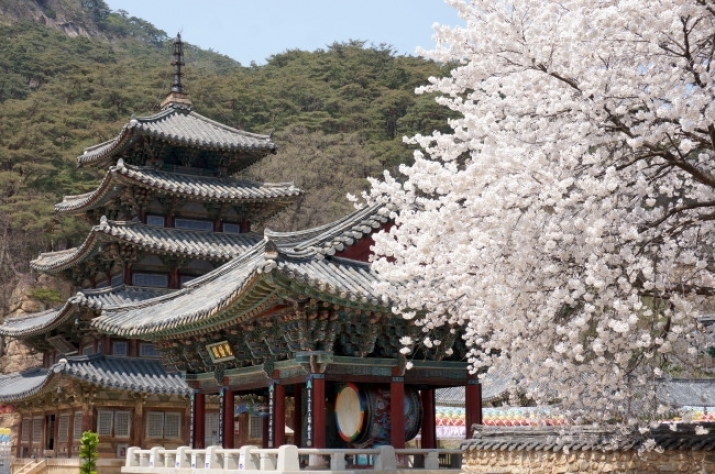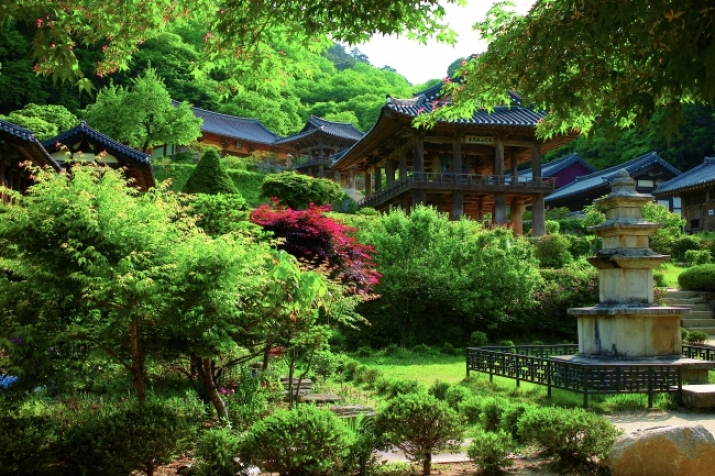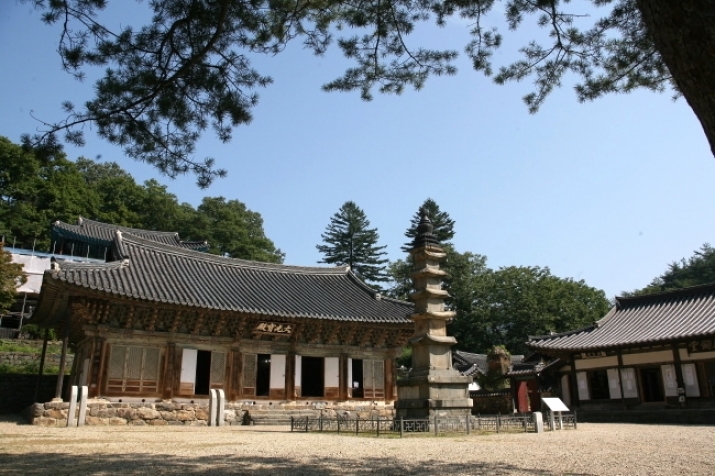NEWS
South Korea Seeks UNESCO World Heritage Status for Seven Mountain Temples
 Beopjusa on Mount Songni. From koreaherald.com
Beopjusa on Mount Songni. From koreaherald.comKorea’s Cultural Heritage Administration (CHA), the government agency charged with preserving and promoting the country’s cultural heritage, has applied to have seven Buddhist temples recognized by UNESCO as World Heritage Sites.
The seven historic temples—all located on mountains—are Beopjusa on Mount Songni, Bongjeongsa on Mount Cheondeung, Buseoksa on Mount Bonghwang, Daeheungsa on Mount Duryun, Magoksa on Mount Taehwa, Seonamsa on Mount Jogye, and Tongdosa on Mount Yeongchuk.
“The temples, since their establishment, have continued the tradition of Korean Buddhism that is both religious and deeply rooted in people’s lives,” an official from the CHA, which has been working to have the historic sites listed since the inclusion on a tentative UNESCO list for nomination in late 2013. The CHA’s preparations, in cooperation with the Jogye order of Korean Buddhism, have included organizing seminars, and drawing up conservation plans for the sites. (The Korea Herald)
Korea hopes that the combined application of the seven sites will demonstrate that they meet the qualifications to be recognized as World Heritage: that is, to show that “the loss, through deterioration or disappearance” of these temples would constitute “an impoverishment of the heritage of all the peoples of the world,” and that they have “outstanding universal value.” (The Korea Herald)
 Buseoksa on Mount Bonghwang. From koreaherald.com
Buseoksa on Mount Bonghwang. From koreaherald.comThe Paris-based International Council on Monuments and Sites (ICOMOS), will review the sites and present its findings to UNESCO next year.
In April 2015, the Jogye Order and the Korean National Committee of the ICOMOS organized a conference at Magoksa to discuss the proposed application, under the theme “Toward Understanding the Outstanding Universal Value of Religious Heritage.” The event was attended by an international gathering of experts in religious and cultural heritage.
According to Lee Sang-hae, emeritus professor at Sungkyunkwan University, there are four principal factors supporting the proposed World Heritage status of the seven temples. First, the temples—all built during the 6th and 7th centuries—underwent expansion or reconstruction during the 17th and 18th centuries, and thereby provide valuable evidence of the active exchange of Buddhist culture throughout East Asia and making each of the sites significant landmarks in relation to the overall history of Buddhism. Second, the locations and architectural design and layouts of the temples are a testament to the historic development of Buddhism in Korea—particularly during the Joseon dynasty (1392–1897), when the Confucian schools of thought were widely studied in Korea. Third, each of the sites is designed with a deliberate aesthetic to stand in harmony with its natural surroundings, emphasizing humanity’s coexistence with, and dependence on, nature. Fourth, the temples have all remained in active use to the present day, home to monastic communities practicing Korean Buddhism.
“We recognize the greatness of this Buddhist heritage, and we wanted to have it acknowledged by the world,” said Venerable Hye-il, who heads the Jogye Order’s Cultural Affairs Department. “Through these architectural monuments, we wanted to show foreigners the living, breathing spirit of Buddhism that exists in Korea to this day.” (The Korea Herald)
 Magoksa on Mount Taehwa. From koreaherald.com
Magoksa on Mount Taehwa. From koreaherald.com“These mountain temples truly embody the essence of Korean Buddhism, which includes elements of Indian, Chinese, and Southeast Asian Buddhism, yet represent characteristics of uniquely Korean philosophies,” he said. (The Korea Herald)
See more
Korea seeks UNESCO World Heritage designation for 7 mountain temples (The Korea Herald)
S. Korea seeks to put mountains temples on World Heritage List (Yonhap News Agency)
Korea’s mountain temples seek UNESCO recognition (The Korea Herald)
Joint committee to seek UNESCO status for Buddhist mountain temples (The Korea Herald)
Traditional Buddhist Mountain Temples of Korea (UNESCO)
Related news from Buddhistdoor Global
Korean Monk Dies of Injuries After Self-immolation Protest
Korean Nun Publishes New Book on Buddhist Cuisine to Heal Mind and Body
Korean Buddhist Cuisine Helps France and Korea Celebrate 130 Years of Diplomatic Ties
Asian Buddhist Animal Rights Conference Held in Seoul, South Korea
Portland Art Museum to Repatriate Rare Buddhist Painting to Korea
Korean Museums Hold Art Exhibitions to Mark the Birth of the Buddha
Related features from Buddhistdoor Global
Korea’s Great Buddhist-Confucian Debate – Book Review: The Most Influential Ideological Conflict in East Asian History
From Seoul to Somerville: The Founding of a Korean Won Buddhist Temple in Massachusetts
The Meditative Mosaics of Lee Kwanwoo
Seon and the City














